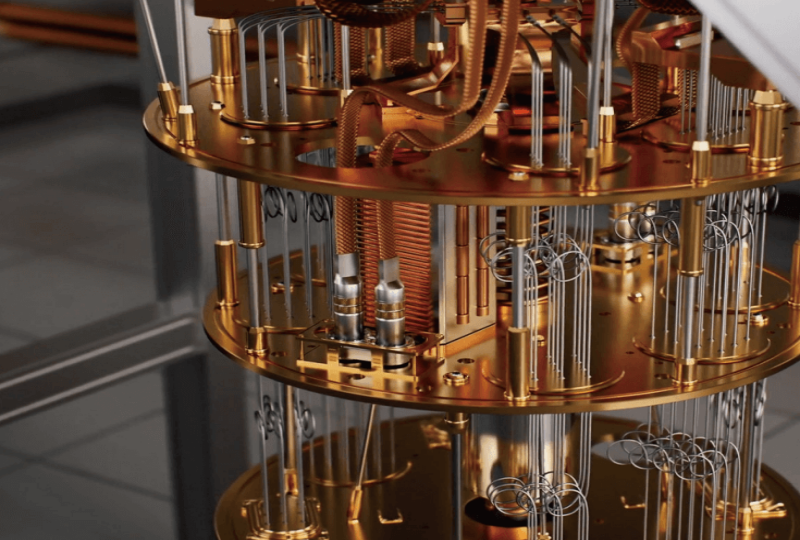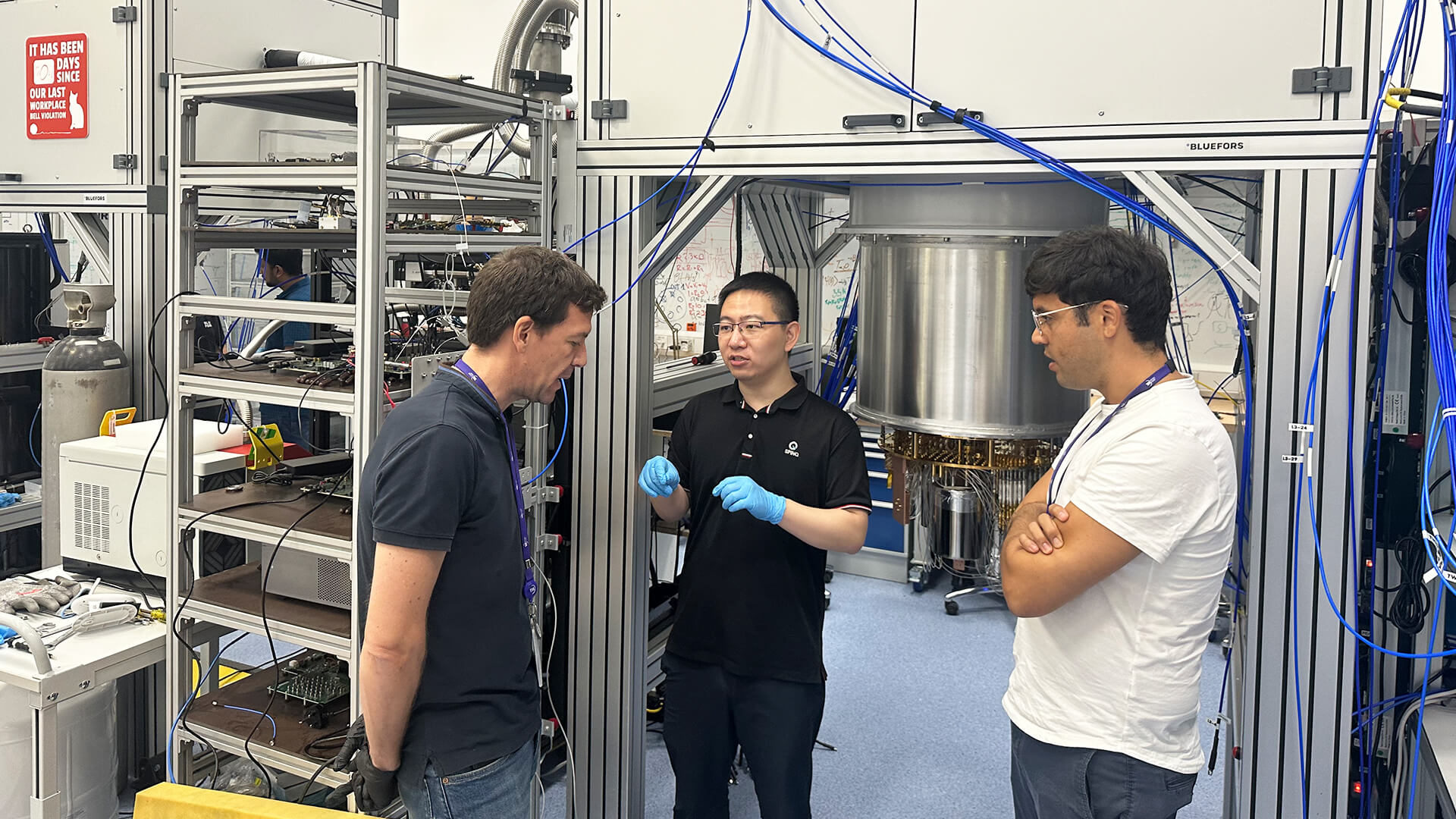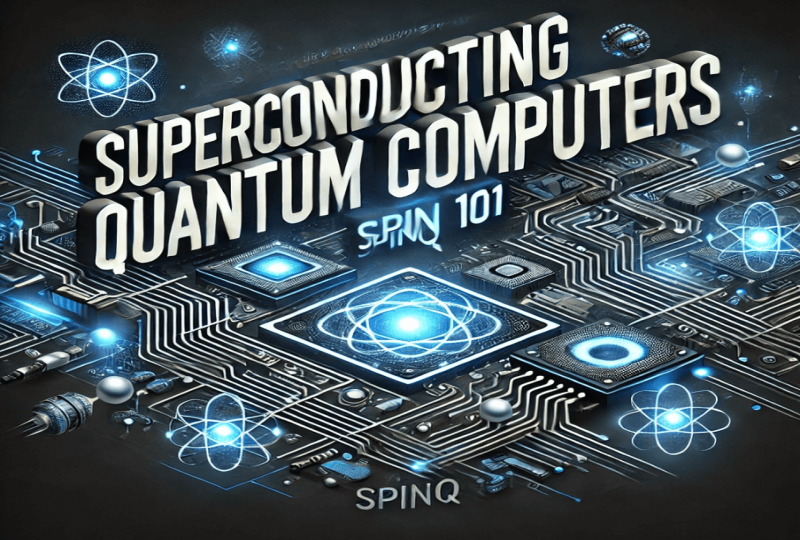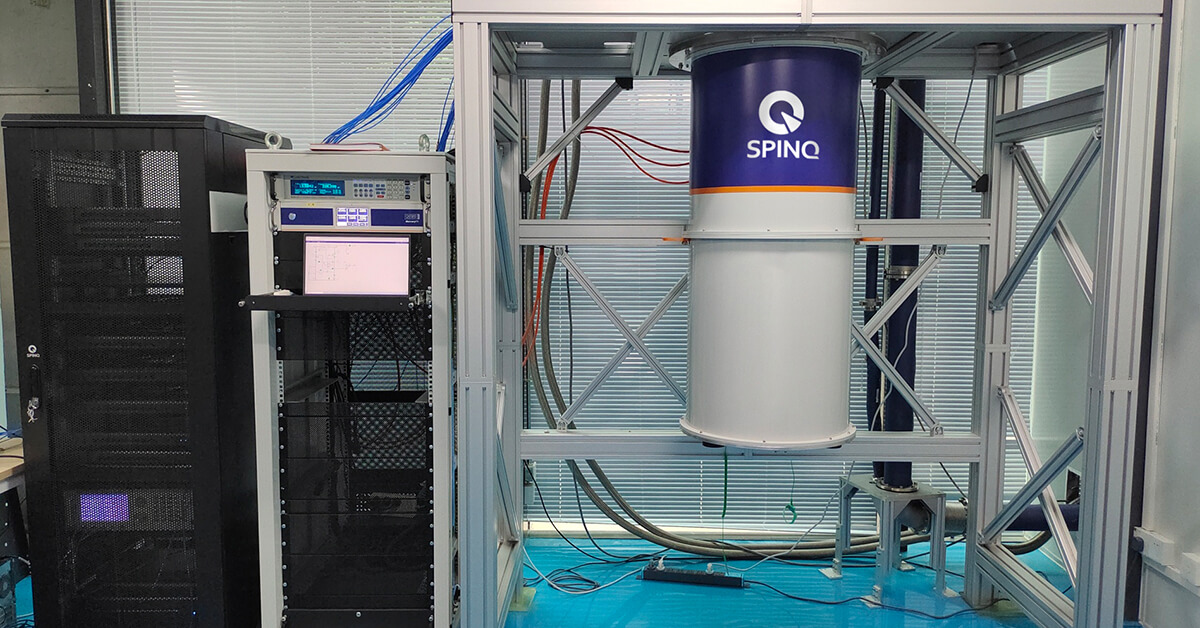What is a Quantum Computer? Explained Simply for Everyone
2025.02.10 · Blog
Curious about what is a quantum computer and the future of computing? This article will demystify quantum computers and explain how they work. Whether you're a tech enthusiast or just starting to explore quantum computers, this guide will break it down in simple terms. Read on to discover the exciting world of quantum technology!
What Is a Quantum Computer?
A quantum computer is a type of computer that uses the principles of quantum mechanics to process information.
Unlike classical computers that use bits to represent data as 0s or 1s, quantum computers use qubits, which can represent both 0 and 1 simultaneously due to superposition. This allows quantum computers to solve certain complex problems much more efficiently than classical computers.

How Does a Quantum Computer Work?
A quantum computer harnesses the unique properties of quantum mechanics—principally superposition, entanglement, and interference—to perform computations.
Here's a basic breakdown:
1. Qubits: Unlike classical bits that represent either a 0 or 1, qubits can represent both 0 and 1 simultaneously due to superposition. This allows quantum computers to process a massive amount of information in parallel, enabling faster solutions for certain complex problems.
2. Superposition: Imagine a coin spinning. While it's in the air, it can be thought of as being both heads and tails at the same time. Once the coin lands, it’s either heads or tails. Similarly, a qubit in superposition exists in multiple states until measured, at which point it collapses into one state.
3. Entanglement: When qubits become entangled, the state of one qubit is directly tied to the state of another, no matter the distance between them. Changing the state of one qubit instantly affects its entangled partner. This enables quantum computers to process information in ways that classical computers cannot.
4. Quantum Gates: Quantum computers use quantum gates to manipulate qubits. These gates alter the probability amplitudes of qubits, changing their states according to specific rules. A quantum algorithm is essentially a sequence of these gates, which evolve the qubits’ superposition and entanglement to solve problems.
5. Interference: Quantum algorithms leverage interference to reinforce the paths leading to correct answers and cancel out incorrect ones. By carefully adjusting the states of qubits through a sequence of gates, quantum interference helps amplify the likelihood of finding the correct solution.
6. Measurement: Once the quantum computation is complete, the qubits are measured. This collapses their superposition states into definite values (either 0 or 1), and the result is read out. The outcome reflects the most probable state of the system, based on the quantum manipulations that have taken place.
In summary, a quantum computer works by using quantum properties to process and store information in ways that classical computers can't. It simultaneously explores multiple solutions to a problem, often leading to faster problem-solving for specific tasks like factoring large numbers, simulating quantum systems, or optimizing complex processes.

What Are the Differences Between Quantum Computing and Classical Computing
|
|
Quantum Computing
|
Classical Computing
|
|
Information Representation
|
Uses qubits, which can be both 0 and 1 at the same time due to superposition.
|
Uses bits, which are either 0 or 1.
|
|
Processing Power
|
Leverages quantum gates and entanglement to perform many calculations in parallel.
|
Processes data sequentially, one bit at a time.
|
|
Efficiency
|
Can solve certain problems exponentially faster, such as factoring large numbers and optimizing complex systems.
|
Efficient for everyday tasks but struggles with complex problems like simulating molecular structures.
|
|
Error Correction
|
Prone to errors due to decoherence; requires advanced quantum error correction.
|
Has reliable error detection and correction methods.
|
|
Speed and Scalability
|
Offers exponential speedup for specific tasks but faces challenges in scalability and stability.
|
Follows a predictable, linear increase in power with more bits.
|
|
Applications
|
Best suited for specialized tasks like cryptography, drug discovery, and AI optimization.
|
Ideal for general tasks like web browsing, word processing, and gaming.
|
6 Types of Quantum Computers You Need to Know in 2025
1. Superconducting Quantum Computers

Superconducting quantum computers use superconducting circuits as qubits, which are made from materials that can conduct electricity without resistance at extremely low temperatures.
Mechanism of Superconducting Quantum Computers
Superconducting qubits work by exploiting the quantum properties of superconducting circuits. These circuits have two states, representing 0 and 1, and can exist in superposition and be entangled.
Advantages of Superconducting Quantum Computers
1. Scalability: Superconducting qubits can be easily integrated into chips, allowing for the construction of large-scale quantum computers.
2. Mature technology: Superconducting quantum computers represent the most advanced and mature quantum computing technology today, making them the preferred choice for industrial applications due to their scalability, stability, and proven performance.
3. Advances in error correction: Research into quantum error correction is progressing, helping to address challenges with qubit stability and noise.
Challenges of Superconducting Quantum Computers
1. Low-temperature requirements: Superconducting qubits need to be cooled to near absolute zero using expensive and complex dilution refrigerators.
2. Quantum noise: Despite advancements, superconducting qubits are still vulnerable to noise, which can cause errors during computations.
3. Interqubit interactions: As more qubits are added, managing interactions and maintaining coherence becomes increasingly complex.
Companies Building Superconducting Quantum Computers
1. IBM: The Condor chip has 1,121 superconducting qubits arranged in a honeycomb pattern.
2. Google: Google's Willow chip is a major breakthrough in quantum computing, designed to tackle one of the biggest challenges in the field: quantum error correction (QEC).
3. SpinQ: SpinQ's superconducting quantum computers and chip technology represent a significant leap toward practical, large-scale real-world applications.

2. Trapped Ion Quantum Computers
Trapped ion quantum computers use individual ions (charged atoms) as qubits, which are manipulated using electromagnetic fields.
Mechanism of Trapped Ion Quantum Computers
Ions are trapped in a vacuum chamber using electromagnetic fields and manipulated with lasers. The internal energy states of the ions are used to represent quantum bits.
Advantages of Trapped Ion Quantum Computers
1. High precision: Trapped ion qubits offer extremely accurate quantum operations, making them ideal for error-sensitive tasks.
2. Long coherence times: The quantum states of trapped ions are stable for long periods, which is crucial for performing complex quantum computations.
3. Accurate gates: Laser control allows for precise quantum gates, leading to high-fidelity operations and improved error correction.
4. Scalable potential: While scaling is challenging, research is progressing on integrating more ions and improving system control for larger quantum computers.
Challenges of Trapped Ion Quantum Computers
1. Complex hardware: Trapped ion systems require sophisticated infrastructure, such as ultra-high vacuum chambers, precise lasers, and magnetic fields.
2. Scaling difficulties: Adding more qubits introduces challenges in maintaining coherence and control across the entire system.
3. Slower operations: Compared to some other quantum technologies, trapped ion qubits have slower gate operation speeds, which can impact processing time.
4. Interqubit communication: Efficiently entangling and interacting large numbers of ions without introducing errors remains a key challenge.
Companies Building Trapped Ion Quantum Computers
1. IonQ (leading the development of trapped ion quantum computers)
2. Honeywell Quantum Solutions (developing scalable trapped ion systems)
3. Alpine Quantum Technologies (focused on advancing trapped ion quantum computing)
3. Photonic Quantum Computers
Photonic quantum computers use photons (particles of light) as qubits. These photons can carry quantum information and be manipulated using optical components.
Mechanism of Photonic Quantum Computers
Photons are generated, manipulated, and measured using optical components like beamsplitters, mirrors, and waveguides. Quantum operations are performed using properties of photons such as polarization, phase, and path.
Advantages of Photonic Quantum Computers
1. Room temperature operation: Photonic quantum computers can operate at room temperature, unlike other technologies that require extreme cooling.
2. Fast data transmission: Photons can travel at the speed of light, enabling rapid quantum information transfer.
3. Inherent stability: Photons are less susceptible to environmental noise, offering stability in quantum operations.
Challenges of Photonic Quantum Computers
1. Limited gate fidelity: Achieving high-fidelity quantum gates with photons is challenging, especially in multi-photon systems.
2. Photon loss: Photons are prone to loss during transmission, which can introduce errors.
3. Scaling issues: Creating large-scale photonic systems with many qubits is difficult due to the complexity of managing numerous optical components.
Companies Building Photonic Quantum Computers
1. PsiQuantum (developing large-scale photonic quantum computers)
2. Xanadu Quantum Technologies (working on photonic quantum processors)
3. Quantum Circuits (focused on building scalable photonic quantum computers)
4. Neutral Atom Quantum Computers
Neutral atom quantum computers use neutral atoms as qubits. The atoms are trapped in place using optical tweezers (focused laser beams) and manipulated by lasers.
Mechanism of Neutral Atom Quantum Computers
Atoms are individually trapped and held in place using precise laser beams. The internal quantum states of these atoms (such as their electron configurations) are used to represent quantum bits (qubits). Quantum operations are performed using lasers to manipulate these states.
Advantages of Neutral Atom Quantum Computers
1. Scalability: It's possible to scale up the number of qubits efficiently, as neutral atoms can be easily trapped and manipulated using optical techniques.
2. Low error rates: Neutral atoms are relatively insensitive to environmental noise, which can lead to more stable qubits.
Challenges of Neutral Atom Quantum Computers
1. Precision control: It can be challenging to control interactions between the atoms, especially as the number of qubits grows.
2. Measurement difficulties: Quantum measurement of neutral atoms requires high-precision detection methods.
Companies/Researchers Developing Neutral Atom Quantum Computers
3. Aliro Quantum
4. Research groups at Harvard University
5. Quantum Dots Quantum Computers
Quantum dots are semiconductor-based structures that confine electrons in all three spatial dimensions, effectively creating artificial atoms. These quantum dots can be used as qubits.
Mechanism of Quantum Dots Quantum Computers
A quantum dot is essentially a tiny region of a semiconductor material where an electron can be confined. The qubit is represented by the spin or energy level of the electron confined in the quantum dot. External electric or magnetic fields are used to control the qubits.
Advantages of Quantum Dots Quantum Computers
1. Integration with existing semiconductor technology: Quantum dots are made using standard semiconductor manufacturing processes, which could make scaling and integration easier.
2. Potential for large-scale systems: Semiconductor quantum dots can be miniaturized and integrated into large arrays for more scalable quantum computing.
Challenges of Quantum Dots Quantum Computers
1. Decoherence: Quantum dots are highly sensitive to external noise, leading to possible errors.
2. Complexity in control: Precise control over the quantum state of electrons in the quantum dot requires sophisticated techniques.
Companies Developing Quantum Dots Quantum Computers
1. Intel
2. Microsoft
6. Topological Quantum Computers
Topological quantum computers aim to use exotic particles called anyons to represent qubits. These qubits are more robust against errors due to their topological nature, which means that information is stored in the global properties of the system rather than the individual states of particles.
Mechanism of Topological Quantum Computers
Qubits in topological quantum computers are based on anyons, which exist in two-dimensional systems. These qubits are manipulated by braiding the anyons, and the quantum information is encoded in the topological properties of the system.
Advantages of Topological Quantum Computers
Promising long-term stability due to error-resistant topological states.
Challenges of Topological Quantum Computers
The technology is still largely experimental and has not been fully realized.
Requires specialized materials and environments for implementation.
Companies Developing Topological Quantum Computers
Microsoft (through their StationQ project)
What Are the Key Uses of Quantum Computers?
Quantum computers hold the potential to revolutionize several fields by solving complex problems that are difficult or impossible for classical computers to handle efficiently. While practical quantum computers are still in development, some of the areas where they could have a significant impact include:
1. Cryptography: Quantum computers could break current cryptographic schemes (e.g., RSA encryption) by solving mathematical problems, like integer factorization, much faster than classical computers. This could lead to the development of new cryptographic systems based on quantum principles, like quantum key distribution (QKD), for more secure communication.
2. Drug Discovery and Healthcare: Quantum computers could simulate complex molecules and biochemical reactions at a level of detail that is beyond classical computers, potentially speeding up the discovery of new drugs, materials, and treatments. They could help model protein folding and interactions, which is critical for understanding diseases like Alzheimer's and cancer.
3. Optimization Problems: Quantum computing could be used to solve optimization problems much faster and more efficiently, such as those encountered in logistics, supply chain management, and financial portfolio optimization. It could help find the best solutions from a vast number of possible options.
4. Machine Learning and Artificial Intelligence: Quantum computers could enhance machine learning algorithms by processing large datasets more efficiently, training models faster, and improving the accuracy of predictions. Quantum-enhanced algorithms could lead to breakthroughs in AI, pattern recognition, and natural language processing.
5. Material Science: Quantum computers could simulate the behavior of materials at the atomic and subatomic levels, enabling the design of new materials with tailored properties. This could impact industries such as manufacturing, energy production, and electronics, leading to advancements like more efficient batteries or superconductors.
6. Climate Modeling and Simulation: Quantum computers could simulate complex climate models more accurately and on a larger scale, helping to predict weather patterns, model environmental changes, and create more effective strategies for combating climate change.
7. Quantum Simulations: Quantum computers can simulate quantum systems themselves (which classical computers cannot do efficiently). This could lead to breakthroughs in fields like quantum chemistry, condensed matter physics, and understanding fundamental quantum phenomena.
8. Financial Modeling: Quantum computing could improve financial risk analysis, market simulations, and fraud detection by providing more powerful tools for analyzing large, complex datasets in real time.

